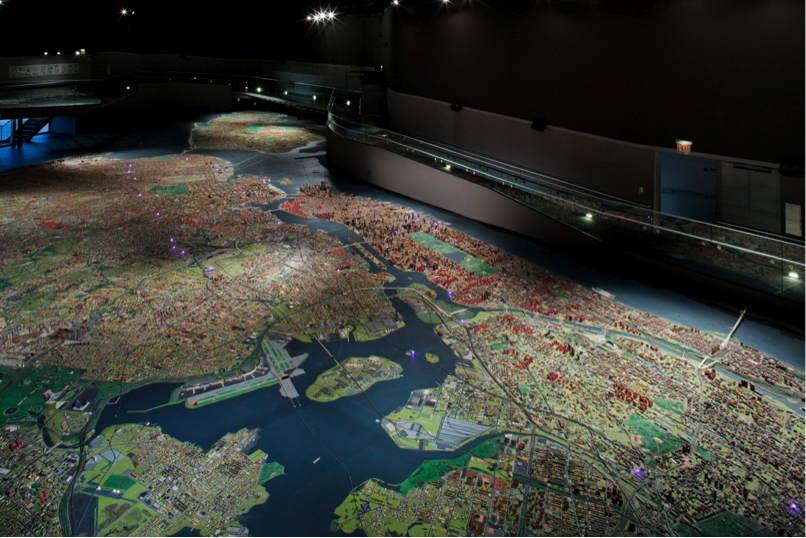This weekend I visited the Queens Museum to see the Mierle Lederman Ukeles retrospective on her career as a feminist performance artist. Her works, particularly her Maintenance Art Performances, have always been engaged with ecology and the infrastructure of cities. Two of the exhibitions components were incorporated into the Queens Museum’s famous Panorama of the City of New York – a scale model of the city commissioned by Robert Moses in 1964. Ten Sweeps Light Path (2016) is an LED installation marking each of Ukeles’ ten “sweeps” or routes followed in the making of “Touch Sanitation Performance.” Trax for Trucks and Barges II (1984/2016) is a 30 minute sound piece consisting of conversational audio Ukeles recorded during the course of her performance as well as noises made by DSNY equipment.
Two things stood out to me about this particular instillation. The first was the incorporation of both sound and visual markers in the mapping aspect of Ukeles’ project. Following our preliminary discussion of maps in class I began to keep an eye out for data representations that used multimedia-mapping strategies. I was fascinated with the way Ukeles chose to represent her project on a map, thus placing mapmaking under the umbrella of artwork. The second intriguing aspect of this installation was the amalgamation of Ukeles’ Maintenance Art Performance, a work defined by feminist and anti-capitalsist sentiments, and the work of Robert Moses. In textbooks, Moses is often referred to as the “master builder” of the New York metropolitan area. However, many critics would be more quick to name him the “great gentrifier” of New York City in the mid-20th century. He was responsible for the displacement of hundreds of thousands of residents in New York City, and his projects directly contributed to the decline of public transportation and lack of funding for schools and other public needs. In a way, embedding Ukeles’ project into Robert Moses’ panorama allows working class members of the city to reclaim the city they maintain and reside in. Through Ten Sweeps Light Path, Mierle Lederman Ukeles sends viewers a blinking reminder of the constant flow of labor and human involvement that goes into maintaining the city of New York.

